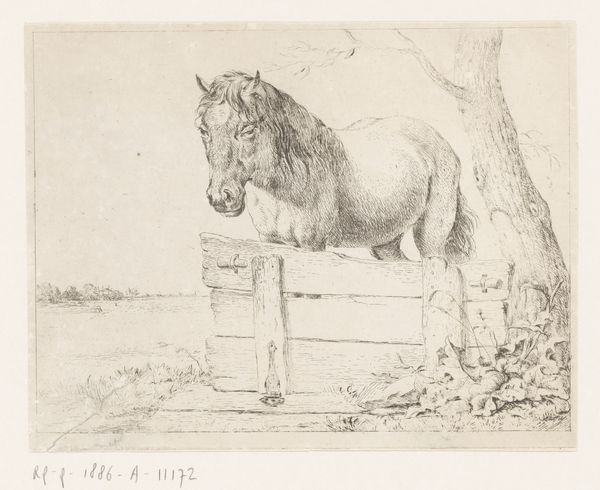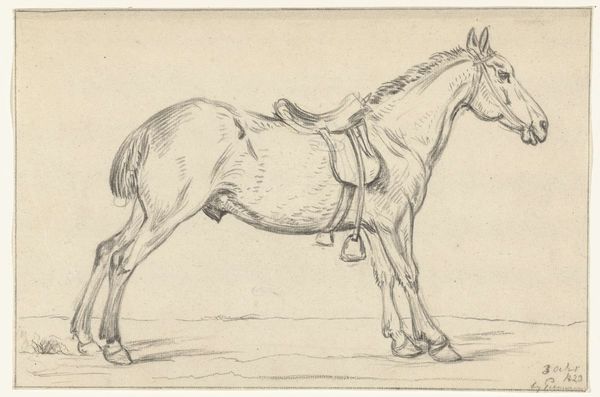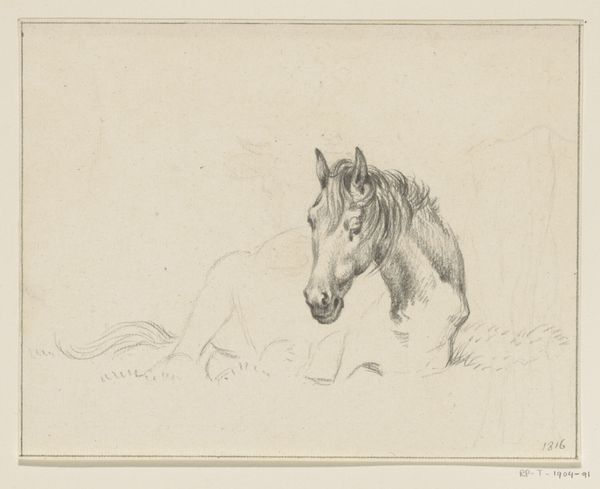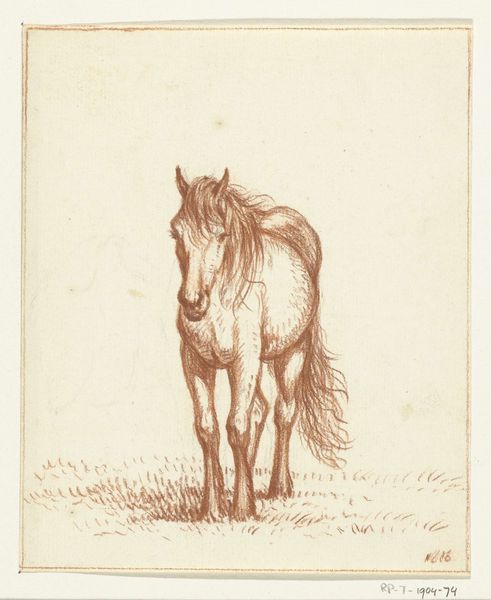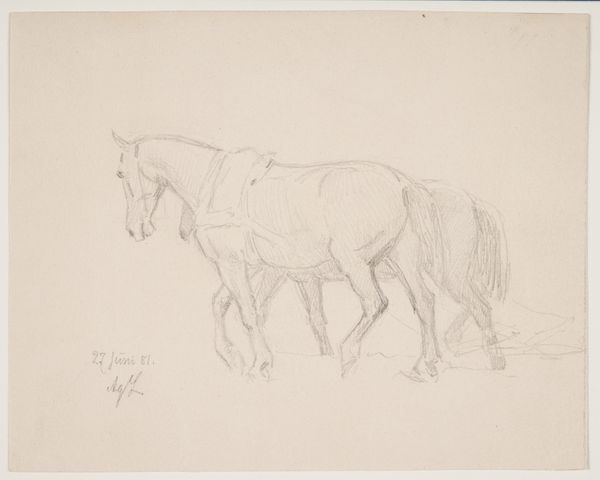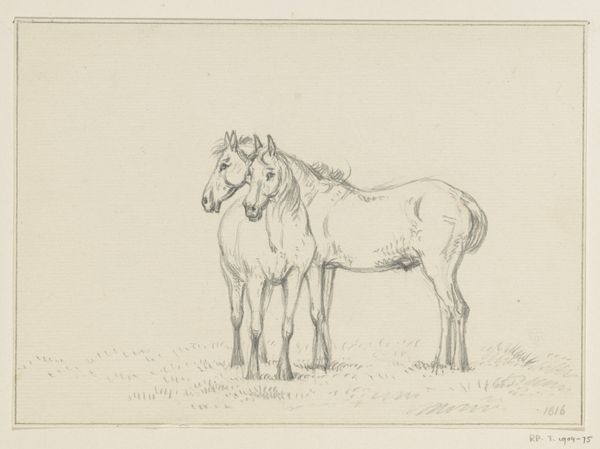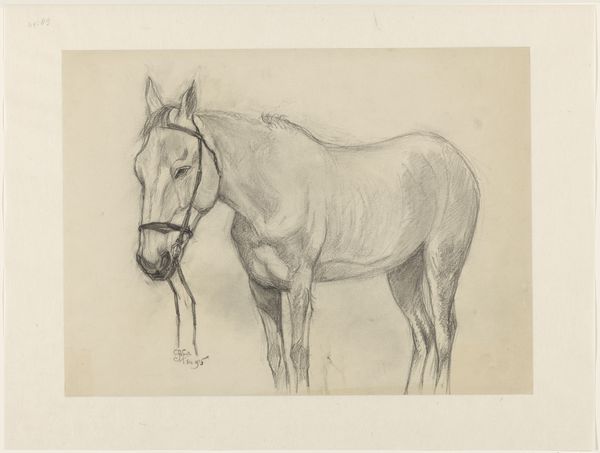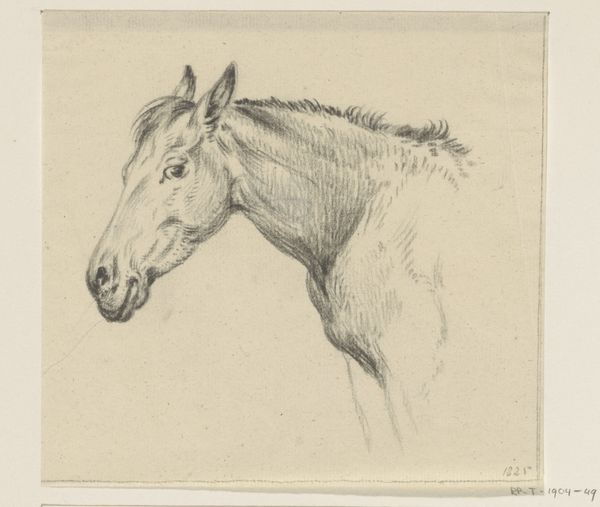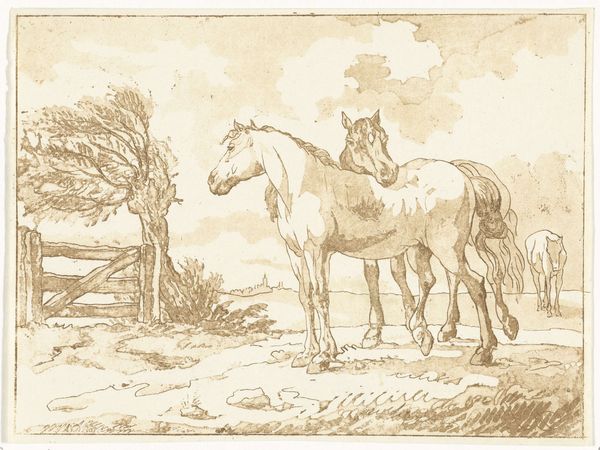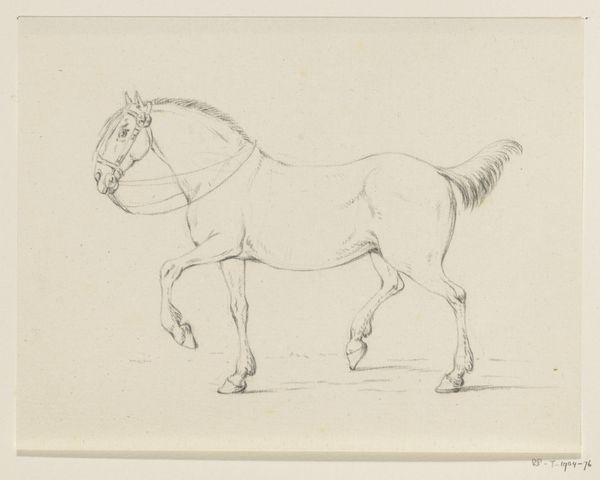
drawing, pencil
#
portrait
#
drawing
#
pencil sketch
#
landscape
#
romanticism
#
pencil
#
horse
#
realism
Dimensions: height 115 mm, width 174 mm
Copyright: Rijks Museum: Open Domain
Curator: It is my pleasure to present "Standing Horse by a Gate, Facing Right" a pencil drawing, sketched sometime between 1775 and 1833, by Jean Bernard, now held at the Rijksmuseum. What are your first impressions? Editor: It feels melancholy. The horse seems weary, almost resigned. And the light… It’s stark, somehow exposing. Curator: Interesting that you pick up on a certain emotional tone. Horses, of course, historically represent a plethora of qualities – freedom, strength, nobility – depending on the context. But I think the somewhat loose lines of the pencil sketch capture an immediacy of vision and lend it to this piece a specific psychological nuance that reflects perhaps a Romantic ideal of nature's subjective response. Editor: And I think there's a potential commentary, even if unintentional, on labor. Horses, for centuries, have been relegated to roles of service. Seeing it depicted near a fence almost symbolizes being held captive or trapped to fulfil the needs of industry or trade. Curator: Perhaps so. It is difficult, of course, to read too much specific intention into what might have been a study, a passing sketch made during a moment of inspiration or down-time. The symbolic freight we load onto it comes from centuries of animal exploitation in varied structures of work, dominance, or leisure. I'd agree, nonetheless, that an inherent sadness is hard to avoid. Editor: Agreed. There's an ambiguity, isn't there? Is the fence a protective barrier, or a cage? Curator: Such objects in art often function precisely that way: their cultural meaning shifts depending on their placement, artistic emphasis, historical use and viewer perspective. They serve a representational shorthand in some ways, becoming charged visual symbols. Editor: Ultimately, its emotional strength, I think, stems from the simplicity. There are no grand theatrics; just a humble scene pregnant with a sense of subdued oppression. Curator: It’s an intimate glimpse of how the animal is burdened with projections of our shared existence: dreams, melancholy, limitations, perhaps a little transcendence. Editor: Yes, the symbolism really provides a somber counterpoint to its simplicity. Curator: This really gives an art a complex psychological insight that would be lost, unless revealed through conversation such as ours. Editor: Indeed. Thank you, I appreciated examining its nuances through this discussion.
Comments
No comments
Be the first to comment and join the conversation on the ultimate creative platform.
